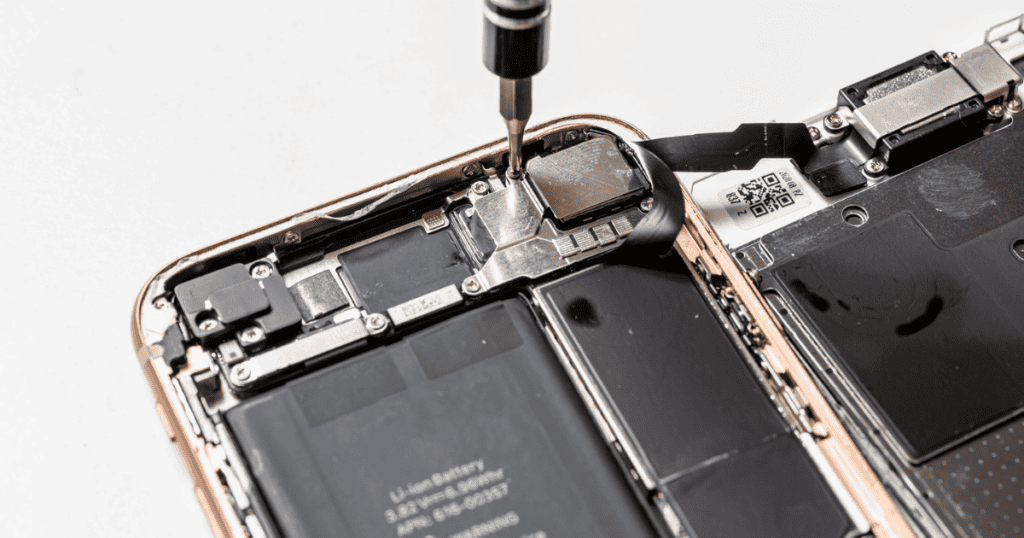As Apple continues to refine its product lineup, this month signifies the end for five key devices, notably including the iPhone 13 and the Apple Watch Series 9. This shift not only reflects the company’s strategy to enhance its offerings but also raises important questions for consumers regarding the implications of such discontinuations. With the introduction of new models, users may find themselves at a crossroads in terms of purchase decisions and support for legacy devices. The upcoming changes could have far-reaching effects—understanding these implications is crucial for anyone invested in Apple’s ecosystem.
Overview of Discontinued Products
As the technology landscape evolves, Apple is poised to discontinue several notable products, marking a significant transition for the brand and its users. The introduction of the iPhone 16 lineup signals the end for the iPhone 13, iPhone 14 Plus, and the iPhone 15 Pro and Pro Max, as Apple refocuses its offerings on newer models that incorporate advanced features and technologies.
In addition to the iPhones, the Apple Watch Series 9, Ultra 2, and SE 2 are also expected to be phased out following the anticipated launch of the Apple Watch Series 10, which promises innovative health and fitness enhancements.
Similarly, the discontinuation of AirPods 2 and 3 looms as the company prepares to unveil the fourth-generation AirPods, designed to deliver improved audio quality and battery performance.
Furthermore, the iPad mini 6 is facing potential discontinuation due to diminishing stock levels, with a new model projected for release in late 2024.
These product discontinuations reflect Apple’s strategic approach to streamline its portfolio and encourage consumers to embrace the latest technologies, ensuring that the brand remains at the forefront of innovation.
M3 MacBook Pros
The impending release of the M3 MacBook Pros marks a significant step forward in Apple’s commitment to enhancing performance and efficiency in its laptop lineup. As the technology landscape evolves, Apple continues to refine its offerings, ensuring that users benefit from cutting-edge capabilities. The M3 MacBook Pros are anticipated to serve as a bridge to the forthcoming M4 chips expected to debut soon.
While the design of the new MacBook Pro models will remain largely unchanged, the focus on internal performance capabilities promises notable improvements. Incremental updates are anticipated, including a base model starting with 16GB of RAM, which will significantly enhance multitasking and productivity.
| Feature | M3 MacBook Pro | Future Expectations |
|---|---|---|
| Chip | M3 | M4, M4 Pro, M4 Max |
| RAM | 16GB (base model) | Up to 64GB |
| Design Changes | None significant | Potential updates |
| Performance Focus | Enhanced capabilities | Major upgrades expected |
| Release Date | This month | Late 2023 |
These advancements underscore Apple’s dedication to remaining at the forefront of technology, providing users with powerful tools to meet their needs.
M2 Mac Mini
How will the redesigned M2 Mac Mini redefine user expectations in the desktop market? This model is set to undergo its most significant redesign in 14 years, showcasing a new, smaller form factor that enhances usability through the relocation of ports to the front.
Last updated in January 2023 with the introduction of M2 and M2 Pro chips, the M2 Mac Mini has already delivered a notable performance boost, making it a strong contender in the desktop arena.
Anticipation builds around the upcoming integration of M4 and M4 Pro chips, which promise further enhancements in processing power and energy efficiency. This redesign not only aims to elevate performance but also focuses on enriching the overall user experience.
By supporting additional features and improvements, the M2 Mac Mini is positioned to compete effectively in a rapidly evolving market.
Apple’s commitment to innovation is evident in this desktop lineup, as the M2 Mac Mini’s redesign represents a blend of modern aesthetics and functional design.
Users can expect a device that not only meets but exceeds their computing needs, setting new standards for what a compact desktop can deliver.
M3 iMac
Significant advancements are on the horizon for the iMac lineup, with a refresh expected next month that will transition from the M3 chip to the more powerful M4 chip. This anticipated iMac refresh signifies a strategic move towards enhanced performance improvements, allowing users to experience a significant boost in computing efficiency and speed.
While the refresh is likely to be a light update with minimal design changes compared to previous models, the focus will predominantly be on the underlying hardware advancements. The shift from the M3 chip to the M4 chip is designed not only to elevate processing capabilities but also to ensure that the iMac remains competitive in an increasingly demanding market.
Apple’s commitment to continual evolution is evident in this transition, as they aim to meet user expectations for a more robust computing experience. The upcoming iMac refresh is set to provide users with a seamless blend of power and performance, paving the way for future developments while bidding farewell to the M3 chip era.
As such, users can look forward to a stronger, more efficient iMac that reflects Apple’s dedication to innovation and excellence.
iPad Mini 6
Stock shortages of the iPad mini 6 have emerged, suggesting a potential discontinuation as Apple gears up for new product releases. This model, which debuted three years ago, has been a popular choice among users seeking a compact yet powerful tablet.
However, as Apple prepares for a refresh in late 2024, the phase-out of the iPad mini 6 appears imminent.
The anticipated refresh of the iPad mini is expected to feature significant upgrades, including a more powerful chip likely to be the A18, enhancing overall performance. Furthermore, the new model will reportedly address long-standing concerns such as jelly scrolling, which has affected user experience.
One of the most notable enhancements will be the introduction of Apple Pencil Pro support, expanding the device’s functionality for creative professionals and students alike.
Additionally, the base model of the refreshed iPad mini is projected to come with 128GB of storage, a step up from its predecessor.
As the discontinuation of the iPad mini 6 becomes more apparent, consumers are encouraged to consider the upcoming model that promises to deliver improved features and an enhanced user experience.
iPad 10
Apple’s iPad 10 stands at a crossroads, as conflicting rumors suggest its potential discontinuation in favor of an upcoming 11th generation model. This uncertainty has generated speculation surrounding the future of the iPad lineup, particularly regarding the base model’s longevity in a rapidly evolving tech landscape.
Recent reports indicate that panels for the iPad 10 have begun shipping this month, hinting at ongoing production activities, even amid discussions of its replacement.
Bloomberg’s Mark Gurman has suggested that a refresh for the iPad 10 could occur as early as October 2024, adding to the intrigue surrounding its fate.
Historically, Apple has demonstrated a tendency to refresh its product offerings to make way for newer models, which raises questions about the viability of the iPad 10 in the face of an impending discontinuation.
As Apple directs its resources towards the development of the upcoming 11th generation model, the iPad 10 may find itself on the chopping block, marking the end of its era in the market.
The dynamics between these models underscore the company’s commitment to innovation while navigating the intricacies of consumer demand and technological advancement.
Implications for Consumers
As certain Apple products face discontinuation, consumers may encounter a range of implications that could affect their purchasing decisions and overall experience. The withdrawal of discontinued models from the market signals a shift towards newer technology, which may lead to the following considerations:
- Limited Availability: As stock of discontinued products dwindles, consumers may struggle to find specific models, impacting their choices and potential upgrades.
- Bargain Opportunities: While some may lament the end of older technology, the discontinuation often results in price reductions. Consumers can take advantage of this by securing discounted models before they vanish entirely.
- Incentive to Upgrade: The phase-out of older models encourages consumers to explore newer releases, which typically feature enhanced capabilities and improved performance, aligning with current market trends.
Users of discontinued products should also remain cognizant that support and repair services may diminish over time, potentially affecting the longevity and resale value of their devices.
As excitement builds around upcoming launches, consumers may feel pressured to make timely decisions regarding their purchases, weighing the benefits of immediate acquisition against the allure of newer innovations.
MacReview
The discontinuation of these five iconic Apple products signals a pivotal moment in the company’s evolution, reminiscent of the shifting tides of innovation in the tech industry. As the iPhone 16 lineup and Series 10 watch emerge, consumers must navigate the landscape of new offerings, bidding farewell to the familiar. This transformation reflects a broader narrative of progress, where the old makes way for the new, inviting users to embrace the future while honoring the legacy of what once was.




